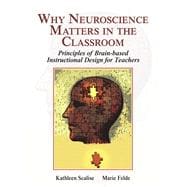This book provides the means for every teacher to build a base of understanding in three essential learning sciences—neuroscience, cognitive psychology, and educational research—as a foundation that they will use throughout their careers. By combining all three fields of the learning sciences, it puts the pieces together in one volume, makes them relevant to the work of every teacher and learner, and fills a gap in teacher education texts. The brain-based principles presented show how the brain and mind work in relation to what we know of behavior and learning in the classroom. The foundational information is presented in a series of key concepts the authors call The CORE. It’s based on research done expressly for this book by the University of Oregon, College of Education in collaboration with the Columbia University Department of Neuroscience. Using a technique called saturation evaluation to explore a wealth of research-based resources, these groups identified what could reasonably constitute essential understandings of brain science for teachers. The CORE fundamentals are summarized in a framework comprised of seven Guiding Principles, each amplified by a related set of Big Ideas. Concise, accessible, and structured especially for teacher education, Why Neuroscience Matters in the Classroom is understandable and relevant to all teachers, even those who say they are science shy. Learning points introduce the reader to what’s to come and Scenarios summarize the material that’s covered, including such topics as neural plasticity and the basics of physical change; how nutrition, exercise, and sleep may affect learning; the major roles that emotion, attitude, and stress play in brain function; and more.








